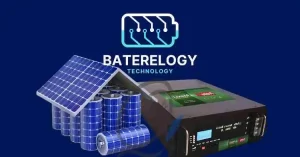Solar Battery Equalization: Have you ever found yourself caught up in the intricate world of batteries? What’s more,_ you might wonder, why should I care about battery equalization? Basically, it’s a lifesaver for your multi-cell battery systems. Let’s dive deep and understand this critical maintenance procedure that ensures the longevity of battery cells and their efficient operation.
Table of Contents
Introduction to Battery Equalization
Solar Battery Equalization: Have you ever found yourself caught up in the intricate world of batteries? What’s more,_ you might wonder, why should I care about battery equalization? Basically, it’s a lifesaver for your multi-cell battery systems. Let’s dive deep and understand this critical maintenance procedure that ensures the longevity of battery cells and their efficient operation.
What is Battery Equalization?
Picture this: You have a choir of singers, and each one has a unique voice. To ensure a harmonious performance, all voices need to be in sync. Battery equalization is the music director making sure every voice, or in this case, battery cell performs in harmony. It’s the balancing act of the voltage and state of charge (SOC) among battery cells in a pack or among individual batteries in a multi-battery system.
Why the need? As it turns out, battery cells, like those singers, naturally drift apart. This is because of slight inconsistencies in manufacturing, self-discharge rates, and various other factors. The equalization charge comes into play here, giving a controlled overcharge to the battery, ensuring that each cell reaches its gassing voltage and effectively redistributing the electrolyte in flooded batteries.
Battery Equalization Voltage
Solar Battery Equalization: If battery equalization were a recipe, the voltage would be the secret sauce. The exact voltage required for this process varies. The equalizing charge is usually higher than the regular charging voltage for lead-acid batteries. So, what’s the magic number? Well, for a 12V lead-acid battery, the equalization voltage typically hovers between 14.4V to 15.5V.
When Should It Be Done?
Ah, the million-dollar question! Much like changing the oil in your car or watering your plants, timing is crucial. You should consider equalization when there’s a noticeable voltage difference or specific gravity change between cells. A trusty voltmeter or hydrometer can be your best friend here. But is that all? Not exactly. Some experts also recommend performing equalization as preventive maintenance, especially for those flooded lead-acid batteries that often find themselves deeply discharged. In some cases, say forklifts, it might be needed after every 5-10 discharge cycles.
Benefits of Battery Equalization
We’ve talked about the ‘what’ and the ‘when,’ but let’s tackle the ‘why.’ What benefits does this procedure bring to the table regarding Solar Battery Equalization?
- Increased Lifespan: Just as exercise strengthens our heart, equalization prevents sulphation, which is a significant cause of battery failure. It breaks down those pesky large sulphate crystals that might form on the plates during deep discharges.
- Optimized Capacity: With equalization, every cell in a battery system rolls up its sleeves to deliver its maximum potential.
- Balanced State of Charge: It guarantees all cells start and finish charging at the same pace, fine-tuning overall battery health.
- Prevention of Weak Cells: In the grand orchestra of a battery pack, no cell is left behind. Equalization ensures weaker cells don’t degrade faster, warding off premature battery pack failures.
Frequency of Equalization
How often should you engage in this? Well, the answer is: it depends. Factors like battery type, usage, and the conditions they operate under play a role. Batteries in regular deep cycle applications often find themselves at the equalization station monthly. However, in systems where the batteries aren’t deeply discharged as often, a bi-annual or annual visit might suffice. The key is to keep an eye out, monitor the battery state, and conduct regular checks.
Conclusion
In essence, battery equalization is not just another routine; it’s a ritual that can significantly enhance the performance, longevity, and safety of battery systems. Having a clear understanding and implementing it at the right time can lead to optimal battery health, ensuring consistent performance throughout its lifespan. So, next time you think about batteries, remember to give a nod to the equalization process, the unsung hero behind efficient battery operations. Explore a comprehensive guide on Solar here.
FAQs
What is the main goal of battery equalization?
It aims to balance the voltage and SOC among battery cells.
How often should I equalize my battery?
It depends on the battery type and usage, but regular monitoring can provide guidance.
Is there a risk of overcharging during equalization?
The process is controlled but always refer to the manufacturer’s guidelines.
Can all batteries be equalized?
Not all. It’s most common for lead-acid batteries, especially flooded types.
Why is balancing the SOC of battery cells crucial?
It optimizes battery health, capacity, and lifespan, ensuring consistent performance.




